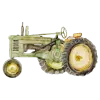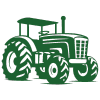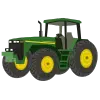The Evolution of Tractor Design and Safety Features: Navigating the Fields of Progress
Have you ever wondered how tractors evolved to become safer and more efficient?
At Iron Bull Mfg., we specialize in the innovation of tractor canopies and ROPS. Join us as we uncover the captivating story of the evolution of tractor design and safety features.
Let's dive into the fields of progress together!
The Roots of Farming
In the humble beginnings of farming, a testament to hard work and determination, farmers toiled manually, cultivating the land with sheer dedication. Imagine the challenges faced by early farmers—backbreaking labor, time constraints, and the constant battle against nature's unpredictability. These pioneers sought technological solutions to revolutionize their craft.
Farmers employed various technological solutions before the advent of tractors to alleviate the challenges of sheer manual labor in farming.
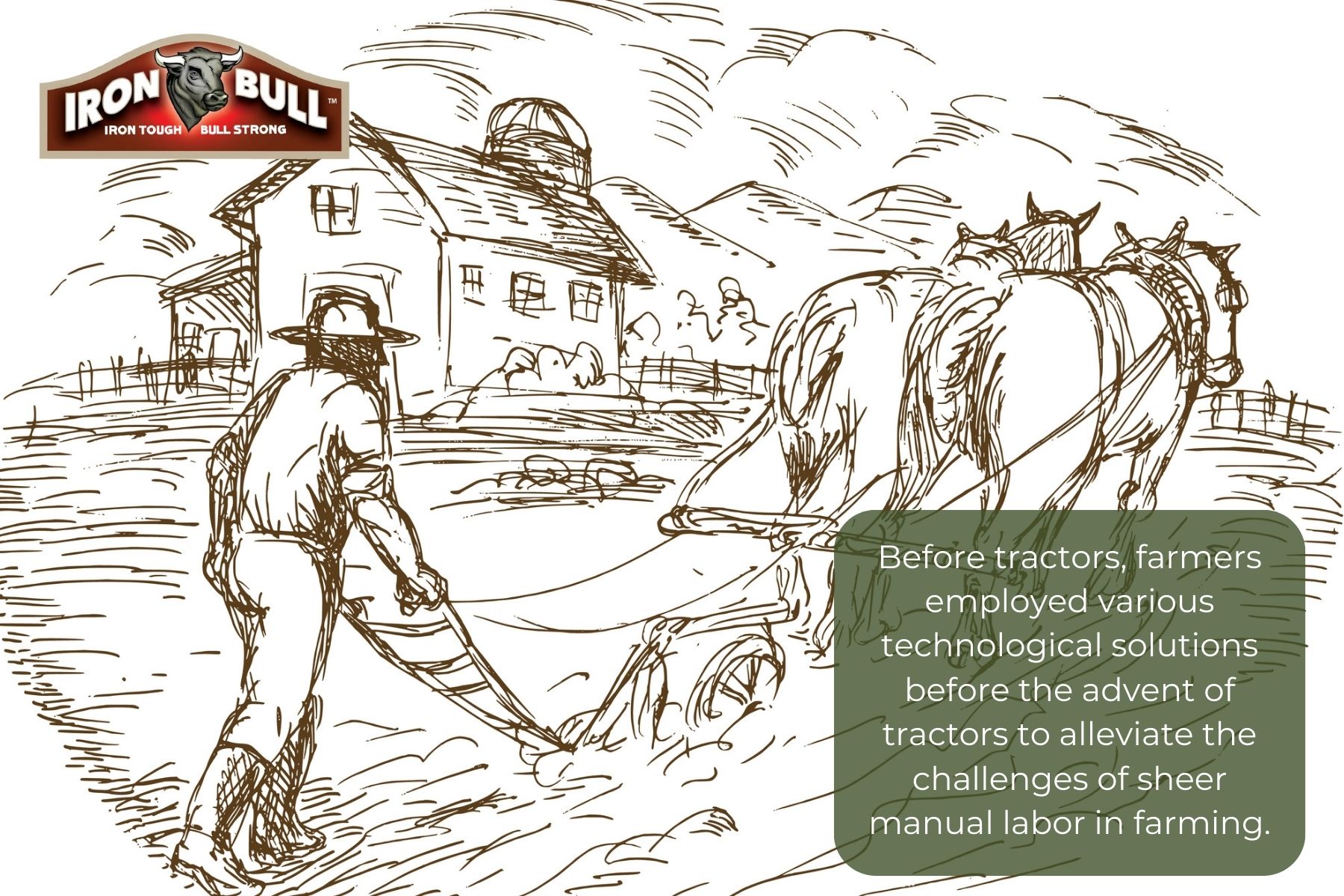
Some notable innovations include:
- Horse-Drawn Plows: In the pre-tractor era, horses were crucial in mechanizing farming. Farmers used horse-drawn plows to break and turn the soil, significantly reducing the physical effort required compared to manual plowing.
- Steam-Powered Machines: Steam-powered engines were introduced in the 19th century as a means to mechanize certain farm tasks. Though less mobile than tractors, steam-powered machines were used for threshing, plowing, and other labor-intensive activities.
- Mechanical Seeders: Early mechanical seeders allowed farmers to plant seeds more efficiently than manual methods. These devices facilitated the uniform distribution of seeds across fields, saving time and effort.
- Hand Tools and Implements: While less technologically advanced, the development of improved hand tools and implements, such as more efficient plows and hoes, made manual labor more manageable.
- Water Wheels and Windmills: In some regions, water wheels and windmills were employed to power simple machinery for tasks like milling grains or pumping water. While not directly related to fieldwork, they eased certain aspects of farm life.
These early innovations marked steps toward mechanization, gradually paving the way for the revolutionary impact of tractors in transforming agricultural practices.
Birth of the Tractor
For centuries, the rhythmic clop of hooves marked the pace of agriculture. But in the late 19th century, a revolution was brewing in the fields. The first tractors, clunky and cumbersome, coughed and sputtered to life, heralding a new era. Pioneering inventors like John Froelich and Harry Ferguson weren't just tinkering with machines; they were rewriting the script of farming.
Froelich, frustrated by the limitations of steam engines, mounted a gasoline engine on a steam traction engine's chassis. His 1892 creation, though primitive, became the world's first commercially successful tractor. Meanwhile, Ferguson, driven by a vision of mechanized farms, tirelessly experimented with gear ratios and designs. His Ferguson tractor, introduced in the 1930s, with its revolutionary three-point hitch system, revolutionized tractor use, making it adaptable and efficient for a wider range of farm tasks.
The impact was immediate and profound. Horses, once the lifeblood of agriculture, were gradually replaced by these iron steeds. Tractors plowed faster, planted deeper, and harvested more efficiently, multiplying farmers' output exponentially. Vast swaths of land, previously uncultivable, were now accessible, leading to increased food production and feeding a growing population.
The birth of the tractor wasn't just a technological marvel – it was a societal transformation.

It freed farmers from the backbreaking labor of manual toil, allowing them to focus on management and innovation. Farms became businesses, and rural communities thrived. The rumble of the tractor became a new soundtrack of progress, echoing across the fields, forever changing the agricultural landscape.
Safety Concerns
As the iron steeds of tractors replaced horses, a hidden danger lurked beneath their newfound efficiency. Often top-heavy and lacking basic safety features, early models were unforgiving machines. Open platforms with no seatbelts offered minimal protection, and rudimentary brakes struggled to control their growing power. Tragically, rollovers and falls became a grim reality for many farmers, casting a dark shadow over the promise of progress.
One such incident shook the agricultural community in 1967. A young farmer, Everett Lundquist, was ejected from his tractor during a rollover, sustaining fatal injuries. His widow, Alvina, refused to let her husband's death be in vain. She embarked on a tireless campaign, lobbying lawmakers and manufacturers to prioritize farm safety. Her unwavering voice resonated across the nation, highlighting the vulnerability of farmers and the urgent need for change.
Alvina's crusade became a catalyst. Stories of similar tragedies surfaced, each a stark reminder of the risks inherent in operating these powerful machines. The realization dawned: tractors needed more than just power and productivity; they needed protection.
And so, the concept of ROPS, Roll-Over Protection Systems, began to take shape. These sturdy structures, designed to shield operators in case of rollovers, were the first rays of hope in a field shadowed by danger. They weren't just safety features but a testament to the growing recognition of the human cost hidden within the engine's roar. Alvina's fight had borne fruit, and the fields, once a battleground of progress and peril, were poised to become safer for those who tilled them.
ROPS and Canopies
The introduction of ROPS in the 1970s was a pivotal moment in farm safety. Initially crude and cumbersome, these metal cages gradually evolved into sophisticated, integrated features. Modern ROPS are designed to absorb impact, prevent operator ejection, and withstand multiple rollovers. Combined with weatherproof canopies that shield against sun, dust, and debris, they have transformed tractors into safer, more comfortable workplaces.
Statistics speak volumes about their impact. Studies show that 99.9% of tractor operators using ROPS and a seat belt survive a rollover with few injuries.
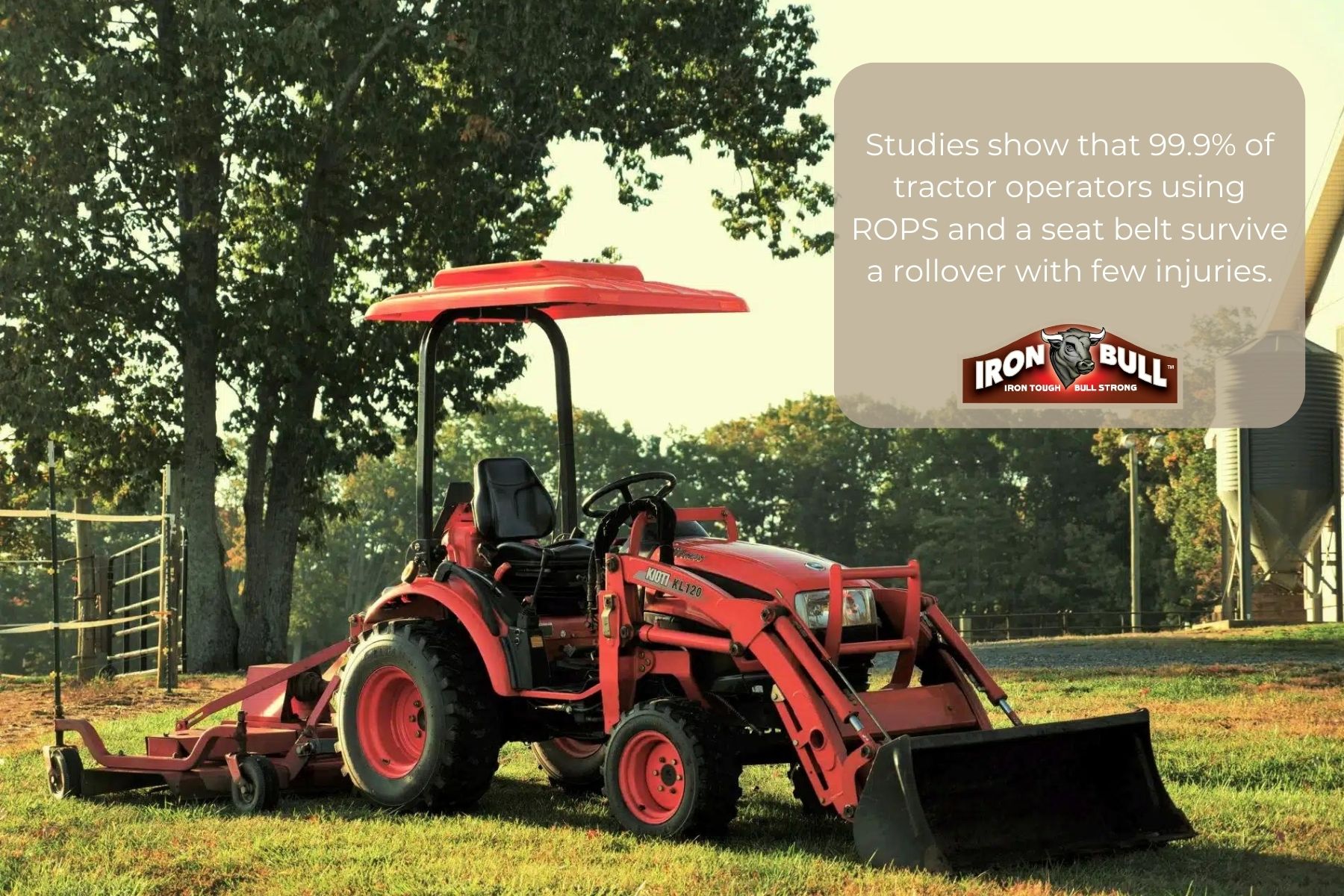
This translates to countless lives saved, and families spared from unimaginable loss.
Beyond preventing the devastating consequences of rollovers, canopies offer additional protection. They shield farmers from the harsh elements, reducing heat exhaustion and fatigue, and provide a barrier against falling objects. This improves overall health and well-being, allowing farmers to work longer and more productively.
The evolution of ROPS and canopies is a story of innovation and resilience. From Alvina Lundquist's crusade to the tireless efforts of engineers and manufacturers, these safety features have emerged as cornerstones of modern agriculture. They stand as a testament to the unwavering commitment to protecting those who feed the world, transforming the once perilous fields into sanctuaries of safety and progress.
Modern Tractors
Today's tractors are marvels of modern engineering, boasting enough tech to make a sci-fi writer blush. Gone are the days of back-breaking labor and guesswork farming. Gone, too, are the days of dangerous tractors. Let's take a deeper look at the mind-blowing advancements that have transformed these once-humble machines into futuristic marvels.
Imagine navigating fields with pinpoint accuracy using satellite-guided GPS. That's the magic of auto-steer, a feature that eliminates crooked rows and wasted fuel, boosting yields by up to 15%. But that's just the tip of the iceberg. Precision farming takes things a step further. Precision farming maximizes efficiency and minimizes environmental impact by using sensors and data analysis to tailor fertilizer and water application to specific areas of the field. Studies show this tech wizardry can reduce fertilizer use by 20% or more, saving costs and protecting precious resources.
And the future is already here for those who dream of farms running themselves. Autonomous tractors, guided by AI and sophisticated sensors, till fields and plant seeds with minimal human intervention. These robotic marvels can potentially revolutionize agriculture, addressing labor shortages and increasing productivity. Imagine vast fields being cultivated around the clock while farmers monitor progress from the comfort of their homes!
The impact of these advancements is undeniable. A 2023 study by Purdue University found that farms using precision agriculture technologies saw a 7% increase in crop yields and a 12% reduction in production costs. It's a win-win for farmers, consumers, and the environment.
So, the next time you see a modern tractor cruising down the road, remember: it's not just a machine. It's a testament to human ingenuity, a symbol of progress, and a glimpse into the future of sustainable, efficient agriculture. The fields may still be brown, but the future of farming is anything but!
Safety vs. Functionality
While ROPS and canopies are lifesavers, they introduce a unique challenge: balancing safety with functionality. Bulky structures can impede visibility, limit maneuverability, and add weight, impacting performance and efficiency. It's a delicate dance, and manufacturers like Iron Bull Manufacturing constantly innovate to strike the perfect balance.
Here at Iron Bull, we take a two-pronged approach to this balancing act. First, we prioritize design optimization. Our ROPS and canopies are meticulously engineered to be as strong and protective as possible while minimizing size and weight. We utilize high-strength steel and optimized geometries to achieve superior structural integrity without unnecessary bulk.
Second, at Iron Bull, we focus on enhanced functionality. Our canopies, for example, often feature integrated features like sunroofs, air vents, and lighting, ensuring operator comfort and visibility without compromising protection. Additionally, we offer a range of ROPS configurations, including foldable and low-profile designs, catering to specific tractor models and tasks without sacrificing safety.
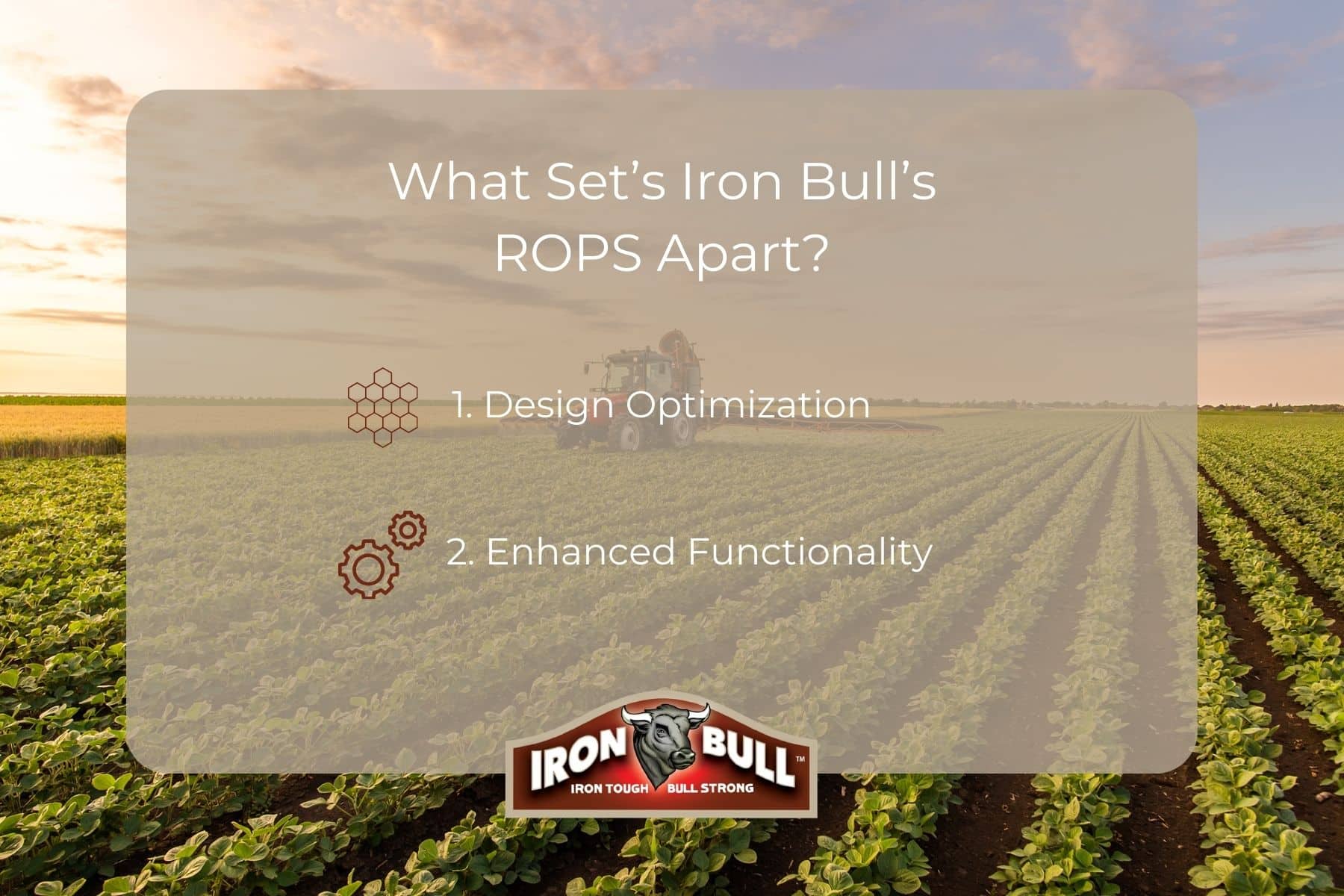
We have found that this commitment to a balanced approach resonates with farmers prioritizing safety and performance.
The balancing act may be complex, but our ROPSs demonstrate that safety and functionality coexist harmoniously. By employing innovative design and prioritizing operator needs, we can ensure that farmers can work confidently and productively, knowing they are protected every step of the way.
The Human Element
Tractor safety isn't just about numbers and statistics; it's about families, communities, and the very heart of agriculture. Every ROPS and canopy isn't just steel and fabric; it's a shield protecting the lives and livelihoods of those who feed the world.
Consider the grandpa who was worrying about his grandson mowing the lawn with the tractor. Knowing the Iron Bull ROPS he bought provides a safety net and gives him peace of mind knowing his grandson is safe. Or picture Michael, a facility manager, knowing that his company's safety allows them to continue supporting local farmers and promoting sustainable practices. These are just a few examples of the human stories woven into the fabric of tractor safety.
Enhanced safety also fosters a sense of well-being and allows farmers to contribute more fully to their communities. Studies by the National Institute for Occupational Safety and Health (NIOSH) show that reduced stress and fatigue from improved safety translates to increased productivity and engagement in community activities.
At Iron Bull Manufacturing, we're just selling products and investing in the well-being of farmers and their communities. Our commitment to safety goes beyond the machines themselves. We actively participate in educational programs, sponsor safety workshops, and advocate for stricter safety regulations, ensuring that future generations of farmers inherit a safer work environment.
In short, the impact of tractor safety extends far beyond the fields. It touches lives, families, and entire communities. By prioritizing safety in their products and supporting broader initiatives, we can play a vital role in building a future where agriculture thrives on efficiency and the well-being of the people who make it possible.
How Iron Bull Can Help
From the dusty fields of the past to the tech-driven farms of today, the evolution of tractors has been marked by progress and, unfortunately, peril.
But amidst the engines' roar and automation's hum, one constant has emerged: the unwavering commitment to safety.
Once revolutionary, ROPS and canopies have become cornerstones of modern agriculture, shielding lives and empowering farmers to work confidently.
Here at Iron Bull, we create ROPSs that:
- Are tough and durable
- Look great
- Are easy to install
- Match your tractor’s brand color
- Provide shade from the sun
Simply order your preferred material, color, and size, and we’ll mail you all the parts you need to install your new ROPS easily.
Then, enjoy the safety, comfort, and peace only a ROPS-certified rollbar and canopy provide!
Besides tractor canopies and ROPS, we also make:
If you have any questions about our products, don’t hesitate to contact us!
We look forward to hearing from you.


